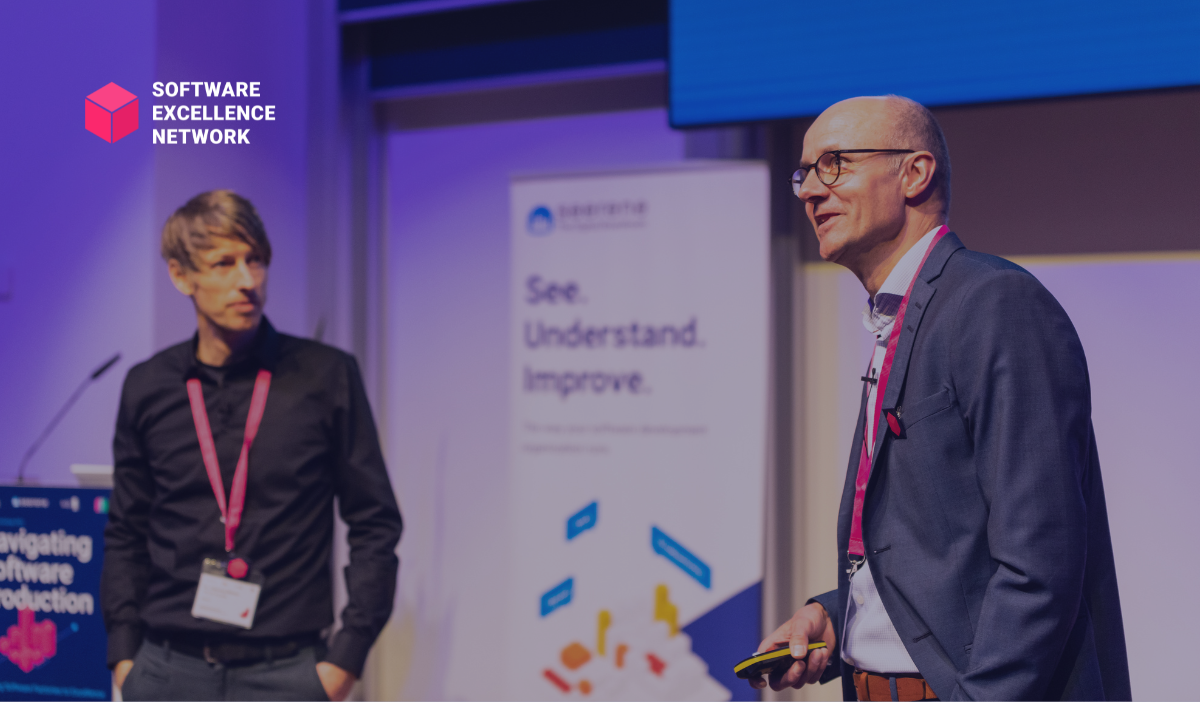
In today’s fast-paced, software-driven world, productivity in software development has become a critical focus for organizations striving to remain competitive. At the recent executive summit, "Navigating Software Production," Johannes Bohnet, CEO of Seerene, and Alexander Hofmann, CTO of MaibornWolff, presented insights on how to address this challenge. Their joint presentation, "Increasing Productivity in a Highly Dynamic World," explored innovative strategies and emerging technologies that can reshape the software production landscape.

Organizations across industries are grappling with an unprecedented demand for software. This trend is evident as software becomes integral to even the most traditional industrial products. A notable example shared was the evolution of a simple lawnmower into a highly sophisticated robotic mowing system. This transformation not only demonstrates the increasing technological complexity of products but also underscores the organizational challenges in managing software-centric development processes.
As businesses integrate software more deeply into their products and services, the need for faster and more efficient development processes becomes paramount. The challenge, however, lies in the inherent inefficiencies of software production. Unlike hardware manufacturing, where processes are highly transparent and standardized, software development often remains opaque, with teams distributed globally and production activities largely invisible.
A key aspect of improving productivity is understanding where inefficiencies lie. Software production involves various non-value-adding activities, such as defect resolution and managing technical debt. These activities consume valuable developer time, which could otherwise be directed toward creating business value. Without a clear view of these inefficiencies, organizations risk significant losses in productivity.
For instance, technical debt—a concept often underestimated—represents accumulated inefficiencies from shortcuts taken in past development efforts. Left unchecked, it can slow development cycles and inflate maintenance costs. Similarly, unoptimized workflows, poor communication across distributed teams, and outdated tools can further exacerbate productivity challenges.
To tackle these challenges, Bohnet and Hofmann highlighted three major “superpowers” that organizations can leverage to enhance productivity:
With demographic shifts reducing the availability of skilled developers in traditional markets, companies are exploring untapped talent pools in regions like Africa, India, and South America. By adopting distributed work models and investing in nearshore and offshore development centers, businesses can access a diverse and highly skilled workforce.
However, successful implementation of global talent strategies requires robust infrastructure and processes. Ensuring seamless collaboration across time zones, maintaining consistent quality standards, and fostering cultural integration are vital to unlocking the full potential of a global workforce.
Artificial intelligence is revolutionizing software development. Tools like AI-powered coding assistants and advanced natural language interfaces are enabling developers to write, debug, and optimize code more efficiently. These technologies represent a significant leap forward, reducing repetitive tasks and allowing teams to focus on high-value activities.
Bohnet and Hofmann pointed out that AI’s impact extends beyond individual developers. By automating testing, deployment, and even code reviews, AI can streamline entire workflows, cutting down development cycles and improving product quality. Yet, adopting AI requires organizations to embrace a culture of experimentation and invest in upskilling their teams.
The ever-evolving landscape of development tools and frameworks presents both opportunities and challenges. Staying updated with state-of-the-art technologies, such as microservices, containerization, and CI/CD pipelines, can drive efficiency. However, managing these dynamic changes requires robust strategies to mitigate technical debt and adapt to new paradigms.
Organizations must also balance innovation with stability. While adopting new technologies can enhance productivity, it’s essential to evaluate their impact on existing systems and ensure a smooth transition.
The speakers emphasized the need for a paradigm shift in how software engineering is approached. This "next-level" methodology combines advanced analytics, strategic oversight, and continuous improvement practices. Central to this approach is the adoption of metrics that provide actionable insights into the development process. By leveraging data already generated within development environments, organizations can measure efficiency, identify bottlenecks, and prioritize improvements.
A key element of this strategy is the visualization of software production processes. Advanced tools can aggregate data across teams, systems, and geographies, creating a clear picture of where inefficiencies lie. These insights enable targeted interventions, such as reallocating resources or addressing specific pain points in the codebase, to drive substantial gains in productivity.
Additionally, fostering a culture of continuous improvement is crucial. Encouraging teams to reflect on their processes, experiment with new approaches, and share lessons learned can lead to sustained productivity gains over time.
The combination of global talent, AI-driven tools, and a dynamic technological foundation offers the potential to significantly enhance software productivity. Bohnet and Hofmann projected that organizations adopting these strategies could achieve up to a fivefold increase in productivity by 2030. However, realizing this potential requires disciplined execution, continuous measurement, and a commitment to innovation.
Leaders play a pivotal role in this transformation. By championing next-level software engineering practices and fostering an environment of collaboration and learning, they can empower their teams to navigate the complexities of software production and harness its potential.
By embracing these strategies, businesses can transform their software production capabilities, delivering higher-quality solutions faster and with greater efficiency. As software continues to shape the future of industries, the ability to navigate its complexities and harness its potential will define the leaders of tomorrow.
The Software Excellence Network is a premier community for executives and decision-makers focused on optimizing software development strategies. It connects industry leaders, fosters knowledge exchange, and provides insights into achieving scalability, efficiency, and innovation in software production. Through events, masterclasses, and collaborative initiatives, the network empowers members to drive transformation and maintain a competitive edge in an increasingly software-defined world.
A Note to Our Readers
This article summarizes the key points discussed by Alexander Hofmann and Dr. Johannes Bohnet during their presentation. While it highlights the core concepts and innovations they introduced, the full depth of their insights and examples is best appreciated by watching the entire session. If you have any questions or need more details, don’t hesitate to contact us.
These Stories on Events/Webinars
August-Bebel-Str. 26-53
14482 Potsdam, Germany
hello@seerene.com
+49 (0) 331 706 234 0
Generative AI Seerene GmbH
August-Bebel-Str. 26-53
14482 Potsdam, Germany
hello@seerene.com
+49 331 7062340